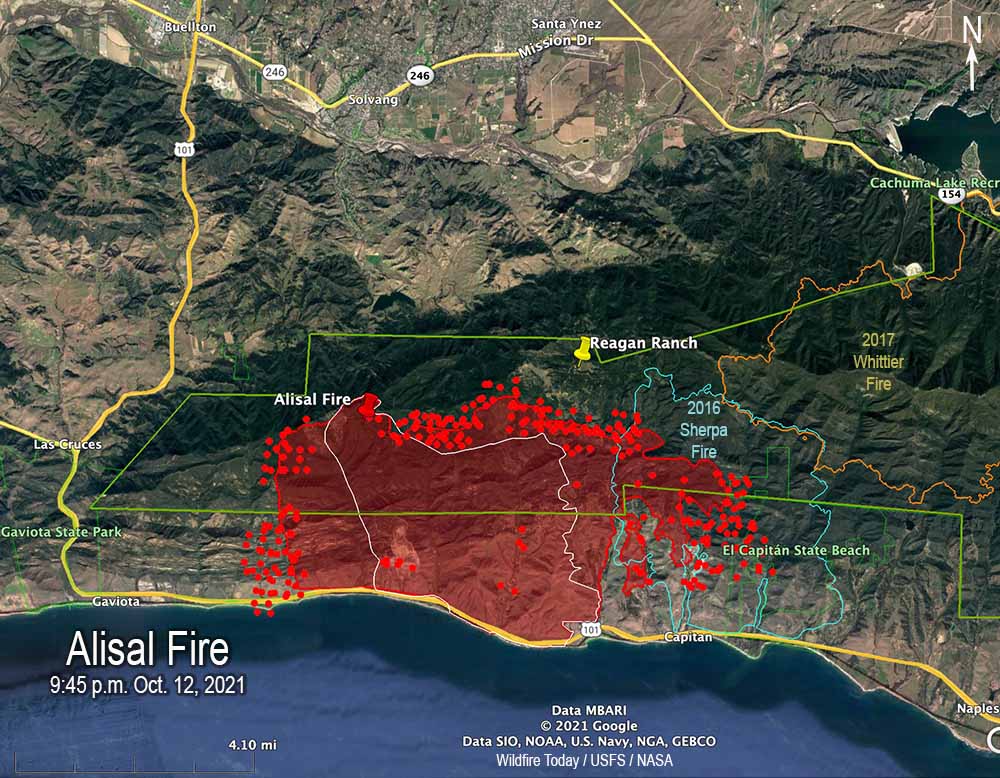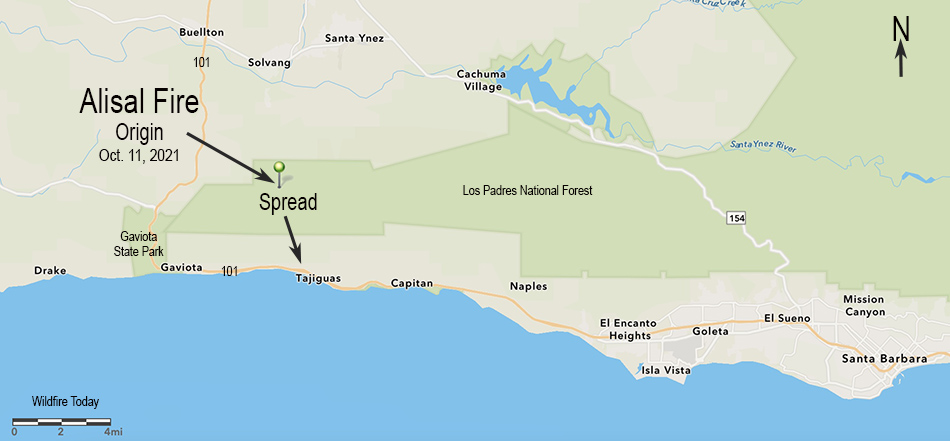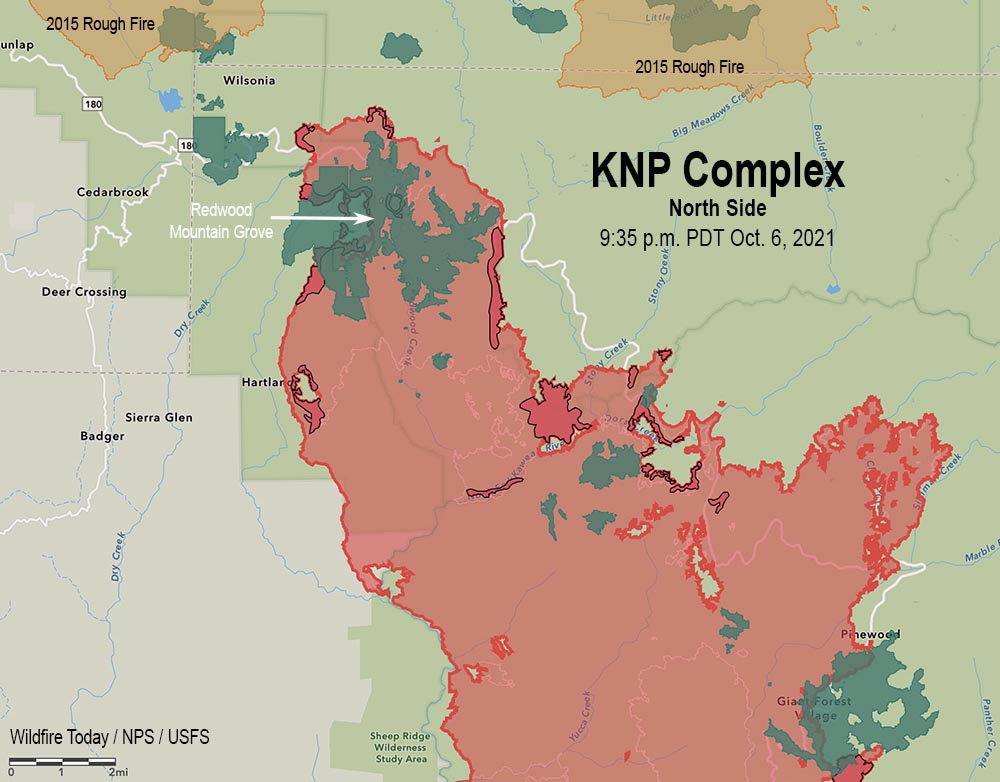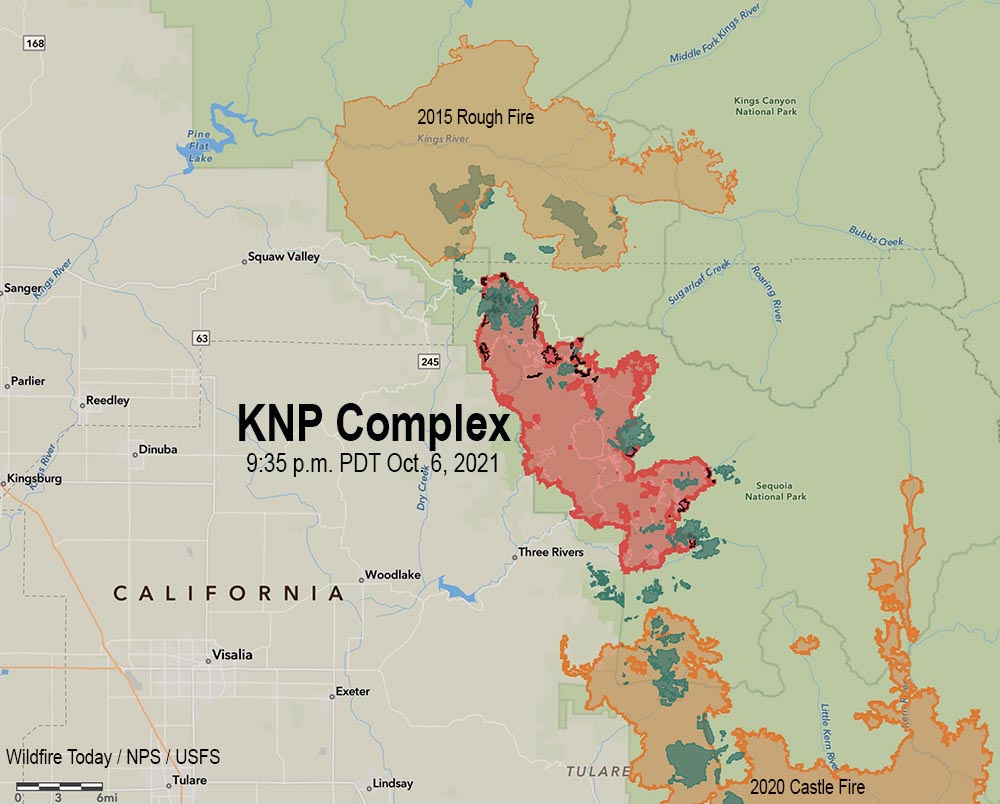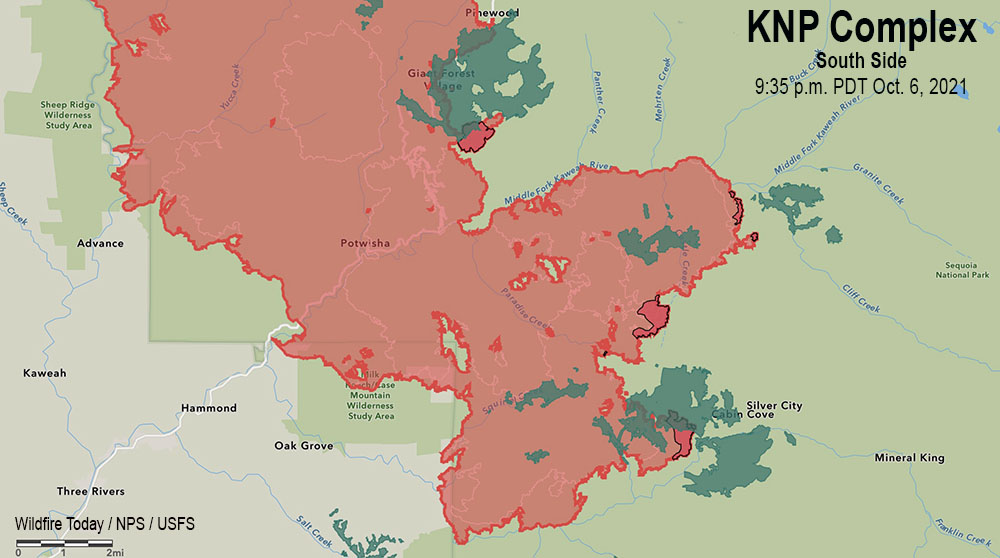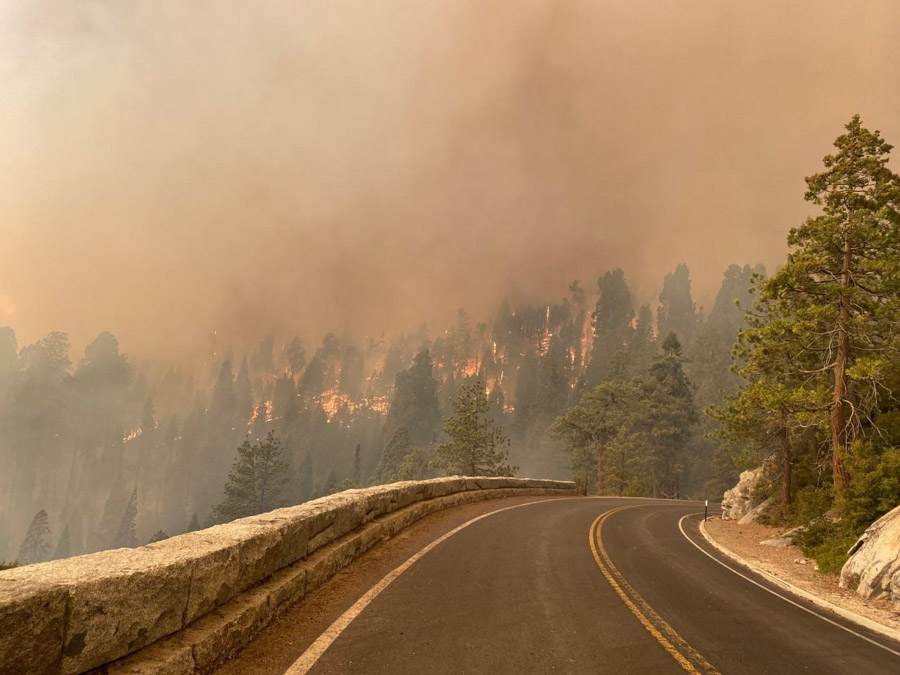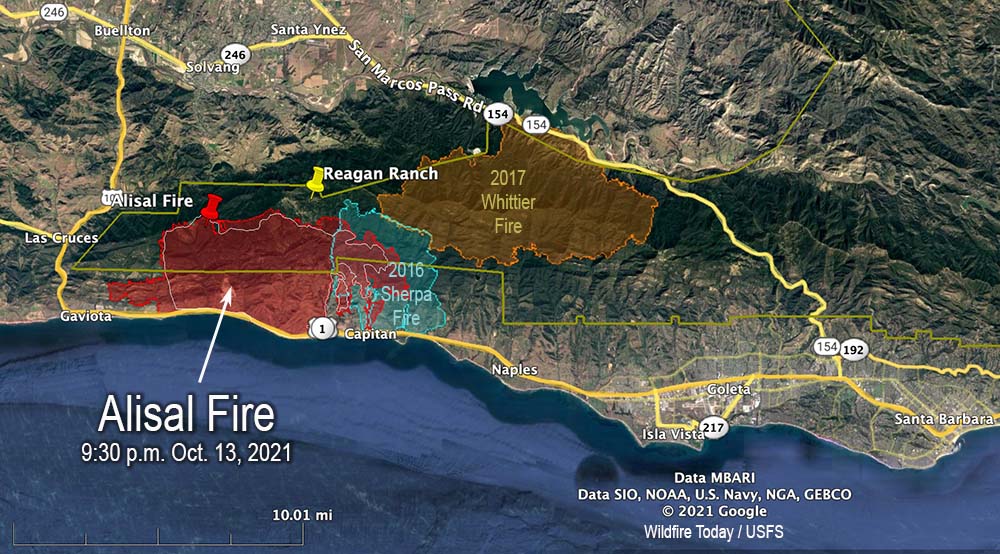
On Wednesday the Alisal Fire, 11 miles west of Goleta, California spread two miles further west and one mile to the east. On the east side it is still spreading through the five year old footprint of the Sherpa Fire.
Air tankers took advantage of decreasing winds Wednesday to apply retardant on the north side, reinforcing the West Camino Cielo road out to Gaviota on the west side. Crews conducted a firing operation along the road later in the afternoon.

Additional evacuations were ordered Wednesday night for the area west of Arroyo Hondo to the intersection of Hwy. 101 and Hwy. 1, including Vista Del Mar School and Gaviota Beach. The ranch formerly owned by President Ronald Reagan, known as the Western White House, is also under evacuation orders. (More information about evacuations.)
To see all articles on Wildfire Today about the Alisal Fire, including the most recent, click HERE.
Thursday morning fire officials said the fire had burned 16,801 acres. Resources assigned to the fire Wednesday evening included 31 hand crews, 143 engines, and 8 helicopters for a total of 1,306 personnel, an increase of 541. Management of the fire has transitioned to a California Type 1 Incident Management team led by Jerry McGgowan.

On Thursday firefighters are going to be faced with wind directions shifting about every six hours. Southwest winds are likely to develop in the morning, which may turn southeasterly in the early afternoon, before becoming northwesterly Wednesday evening. The relative humidity will be in the low 20s, but will rise to the mid-50s Wednesday night. Light and mostly onshore winds are in the forecast for Friday.



Below is a timelapse video of the Alisal Fire — about five hours compressed into 30 seconds. It was shot by the AlertWildfire camera on Santa Ynez Peak, looking west-southwest, from 2:20 p.m until 7 p.m., October 13, 2021.


